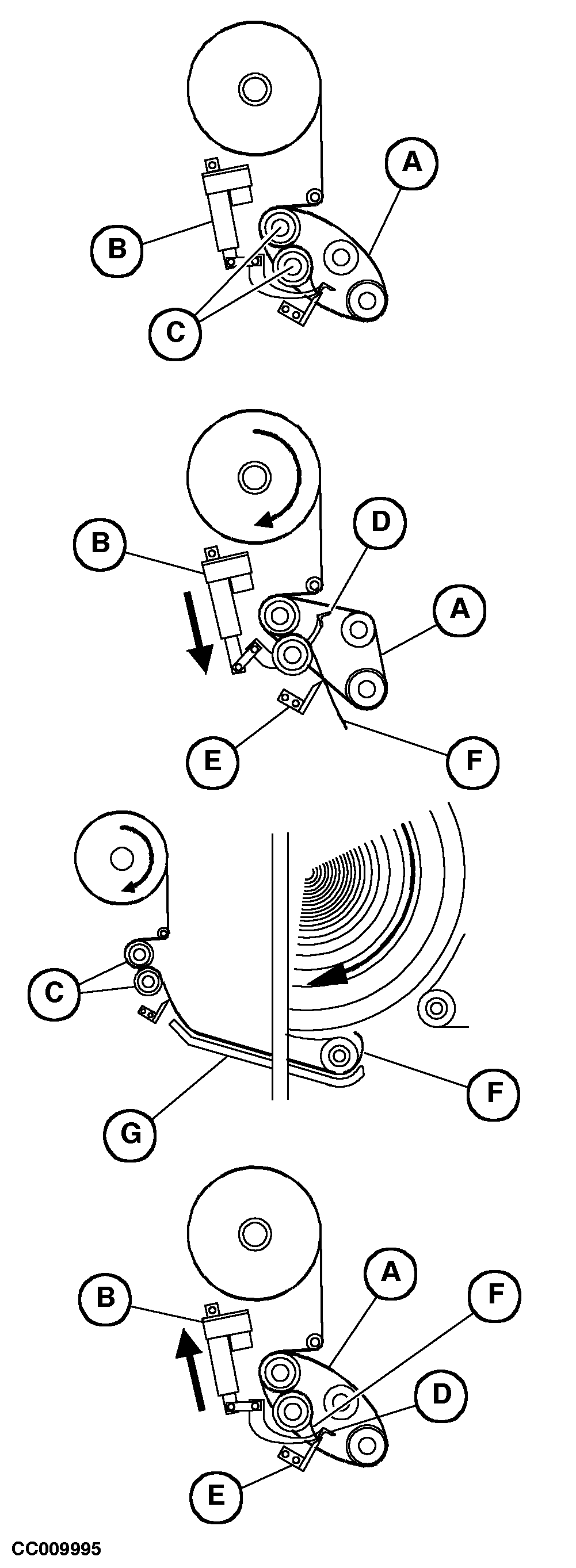How the Net Wrapping WorksDuring the normal baling process, the drive belt (A) is loose and the net actuator (B) is in retracted position. NOTE: During the bale formation, the net feed rolls (C) are locked by a brake pad applied on drive pulley. Once desired bale diameter is achieved, the net actuator (B) is actuated by the control monitor. The actuator extension releases the brake effect on feed rolls (C), swings the bar (D) away from the knife (E) and tensions the feed roll drive belt (A). Net feed rolls (C) then rotate and bring net (F) up to the bale assisted by the belts of the baler and lower guide (G). The bale catches the net and wraps it around itself. The speed around the bale is greater than the speed provided by the feed rolls (C). This creates a braking effect which tightly wraps the net all around the bale. NOTE: The net should make between one and a half and several turns around the bale, depending on the operator setting. Once the desired number of wraps is achieved, the net actuator (B) is quickly retracted, swinging the bar (D) to bring the net (F) down to the knife (E) NOTE: During actuator retraction, the rotation of net feed rolls (C) is progressively interrupted by brake pad. The net is cut and drive belt (A) is again loose. The cycle is completed.
|
|
CC,570RB003740 -19-15SEP98-1/1 |
